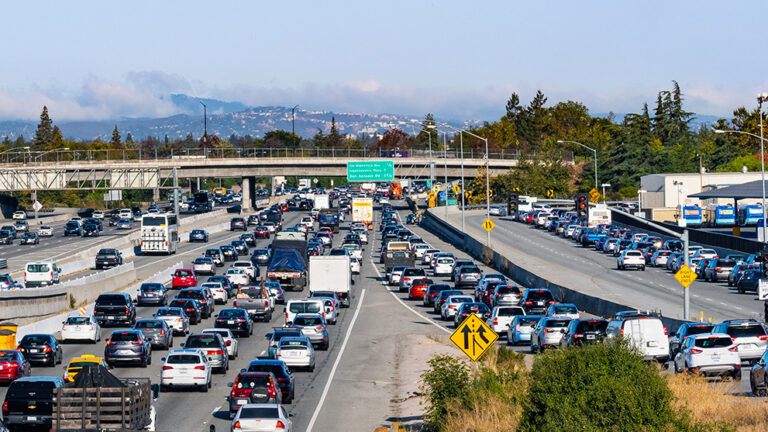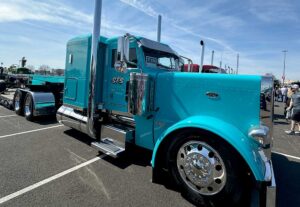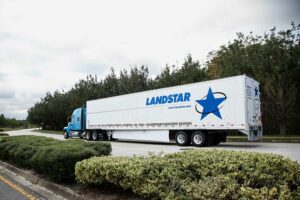While the concept of separate “truck-only” drive lanes, separated from other traffic by barrier walls or medians, is not a new idea, the actual implementation is a relatively novel concept for the U.S. Sure, it’s common for truckers to see signs directing them to restrict usage to one or two lanes, but those lanes are not usually physically set apart from the others — and the lanes are not exclusively reserved for big rigs.
Two of the nation’s first truck-only lanes are along Interstate 5 in Los Angeles, and more may be implemented in the near future. Black-and-white signs, which are enforceable by law, direct trucks to follow these lanes. However, green signs, NOT enforceable by law, advise passenger cars and noncommercial vehicles to remain in the main travel lanes, according to California’s state transportation department (Caltrans). The result? Noncommercial vehicles can mingle with the big rigs in the so-called “truck-only” lanes, effectively canceling the lanes’ original purpose “to separate trucks from other mixed-flow traffic to enhance safety and/or stabilize traffic flow.”
While several states, including Texas, Arizona and others, have tossed around the idea of creating truck-only lanes with similar goals of facilitating traffic flow in congested areas, only one has set a concrete plan into motion.
The Georgia Department of Transportation’s Major Mobility Investment Program (MMIP), a long-range, five-pronged plan put into motion in 2016 with a projected total completion date of 2032, includes the I-75 Commercial Vehicle Lanes project. The project will add barrier-separated lanes devoted to commercial traffic along a 40-mile stretch of northbound Interstate 75 between Macon and McDonough, part of a heavily traveled freight corridor between Savannah, one of the nation’s major shipping ports, and Atlanta, where shipping giant UPS Inc. is headquartered.
The nontolled lanes are slated for the use of commercial trucks only, with passenger and general-use vehicles prohibited — a first for the U.S.
Other prongs of MMIP include revamping interchanges at I-16 and I-95, I-285 and I-20 West, and I-285 and I-20 East; adding express lanes at three points along I-285 and along SR 400; widening parts of I-85 and I-16; and completing advanced-improvement projects in a variety of areas.
According to GDOT’s website, “The I-75 Commercial Vehicle Lanes Project will improve mobility and safety for freight operators and vehicles. … The project will benefit all motorists by reducing congestion and improving safety while offering direct economic benefits to travelers in Georgia as well as freight and logistic carriers in the Southeast.”
In the Winter 2020 issue of Milepost, GDOT’s quarterly publication, Tim Matthews, MMIP program manager, described the I-75 commercial-vehicle lanes project as a “big win” for GDOT.
“The acceleration of this project supports freight mobility and travel-time reliability for all along this important corridor,” Matthews wrote. “Through these major projects, Georgia DOT will deliver some of the nation’s most innovative transport solutions and the newest engineering and technical advances by addressing congestion, adding capacity and supporting transit.”
An article published in March 2018, Roads & Bridges, a trade publication aimed at the road- and bridge-construction industry, quoted the estimated cost of the project at $1.8 billion, adding that GDOT estimates a 40% reduction in traffic delays along the route.
According to a timeline posted at majormobilityga.com, a website that offers updates on the program, construction on the commercial-vehicles-only lanes is slated to begin in 2024, and GDOT hopes to have the stretch open to traffic by 2028.
Linda Garner-Bunch has been in publishing for more than 30 years. You name it, Linda has written about it. She has served as an editor for a group of national do-it-yourself publications and has coordinated the real estate section of Arkansas’ only statewide newspaper, in addition to working on a variety of niche publications ranging from bridal magazines to high-school sports previews and everything in between. She is also an experienced photographer and copy editor who enjoys telling the stories of the “Knights of the Highway,” as she calls our nation’s truck drivers.








